Why Vendor Finance deserves your attention
At WalterFrank, we’ve used Vendor Finance to successfully purchase eight properties so far—and we think it's a valuable tool for buyers to have in their property investing toolkit.
If you're new to the concept, we recommend checking out our Vendor Finance Complete Overview first.
Once you're familiar with the basics, this guide will walk you through how buyers can benefit from Vendor Finance, what to watch out for, and how to approach it strategically.
What is Vendor Finance?
Vendor Finance (also called “seller finance”) is a method of buying property where the seller agrees to lend the buyer the purchase price—or a portion of it—rather than the buyer borrowing from a bank.
Sounds too good to be true? Let’s dig into why it’s not—and how to make it work for you.
1. No Deposit Needed
One of the biggest barriers for new and growing investors is saving up for a deposit. Traditionally, you’d need at least 25% of the property’s value up front to secure bank financing. But with Vendor Finance, that hurdle can disappear completely.
If the seller agrees to lend you the full amount of the purchase price, you can start building your portfolio without tying up large chunks of capital. Imagine how quickly you could grow if you didn’t have to wait to save for each deposit?
Yes, there’s still stamp duty to pay—especially with the additional 5% surcharge for investors—but that’s a cost you’d face with or without Vendor Finance. So removing the need for equity is a game-changer.
2. No Dealing with Banks
Banks are not exactly known for making things easy. With Vendor Finance, you’re dealing directly with the seller—cutting out the middlemen, endless paperwork, and rigid lending criteria. There’s often no need for broker fees, loan application headaches and forensic analysis of your accounts.
A valuation is unnecessary, as the seller has already agreed to the sale price as a fair value for the property; otherwise, they would not have accepted your offer.
In most cases, sellers are happy with interest-only payments and don’t tack on additional arrangement fees. This makes the process smoother, faster, and potentially cheaper than going through traditional finance channels.
How Will You Pay the Seller Back?
This is the biggest question. If you’ve borrowed 100% of the property’s value, and your plan is to eventually refinance with a bank, you’ll need to inject that 25% equity later to make the numbers work. So how will you bridge that gap? You might be planning:
- A major refurbishment to increase the property’s value
- A passive uplift from market appreciation
- To use rental income over time to build the necessary funds
- To draw on profits from other investments or your day job
Whatever your plan is, make sure it’s realistic. There’s no point in accelerating your growth if you’re just kicking a problem down the road. Think long term. Think sustainably.
Is It Actually a Good Deal?
Just because you can do a deal at 100% Vendor Finance doesn’t mean you should.
Ask yourself: Does the property stack up as a good investment? Does the rent cover the interest payments, running costs, and still leave a healthy buffer? What happens if interest rates rise or the market softens?
Remember: With Vendor Finance, you’re often paying interest on the full purchase price rather than, say, 75% of it with a bank loan. That extra 25% being financed means your total interest cost is roughly a third higher, so cash flow can get tight. If a deal doesn’t cash flow, even with zero deposit down, walk away. We’ve turned down plenty ourselves for exactly that reason.
You might be surprised how often the answer is yes. You’ve got nothing to lose by asking – and potentially a deal to gain.
Final Thoughts
Vendor Finance isn’t a magic solution—but it can be a powerful tool for the right buyer in the right situation. It offers speed, flexibility, and a way to scale faster than traditional methods allow.
But like all tools, it has to be used wisely. Understand the risks, run your numbers carefully, and never compromise on the fundamentals of a solid deal.
Happy investing!












